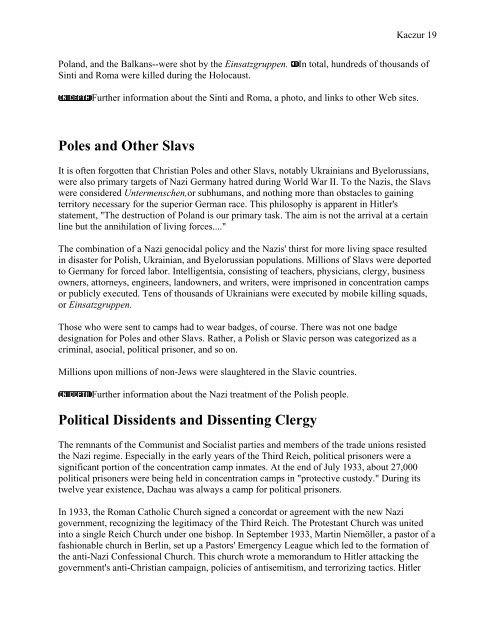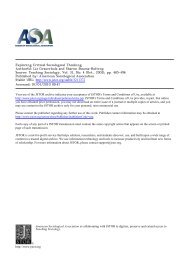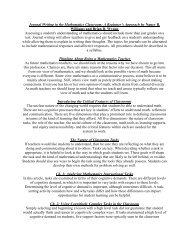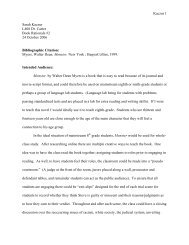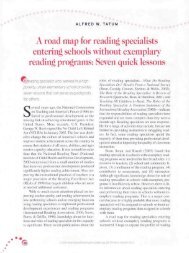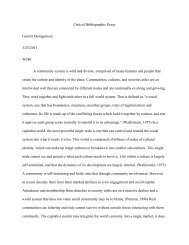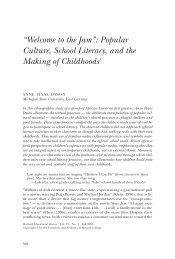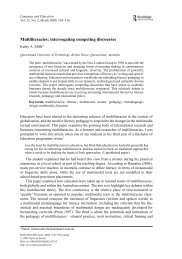Night. Night - Oncourse
Night. Night - Oncourse
Night. Night - Oncourse
Create successful ePaper yourself
Turn your PDF publications into a flip-book with our unique Google optimized e-Paper software.
Kaczur 19<br />
Poland, and the Balkans--were shot by the Einsatzgruppen.<br />
Sinti and Roma were killed during the Holocaust.<br />
In total, hundreds of thousands of<br />
Further information about the Sinti and Roma, a photo, and links to other Web sites.<br />
Poles and Other Slavs<br />
It is often forgotten that Christian Poles and other Slavs, notably Ukrainians and Byelorussians,<br />
were also primary targets of Nazi Germany hatred during World War II. To the Nazis, the Slavs<br />
were considered Untermenschen,or subhumans, and nothing more than obstacles to gaining<br />
territory necessary for the superior German race. This philosophy is apparent in Hitler's<br />
statement, "The destruction of Poland is our primary task. The aim is not the arrival at a certain<br />
line but the annihilation of living forces...."<br />
The combination of a Nazi genocidal policy and the Nazis' thirst for more living space resulted<br />
in disaster for Polish, Ukrainian, and Byelorussian populations. Millions of Slavs were deported<br />
to Germany for forced labor. Intelligentsia, consisting of teachers, physicians, clergy, business<br />
owners, attorneys, engineers, landowners, and writers, were imprisoned in concentration camps<br />
or publicly executed. Tens of thousands of Ukrainians were executed by mobile killing squads,<br />
or Einsatzgruppen.<br />
Those who were sent to camps had to wear badges, of course. There was not one badge<br />
designation for Poles and other Slavs. Rather, a Polish or Slavic person was categorized as a<br />
criminal, asocial, political prisoner, and so on.<br />
Millions upon millions of non-Jews were slaughtered in the Slavic countries.<br />
Further information about the Nazi treatment of the Polish people.<br />
Political Dissidents and Dissenting Clergy<br />
The remnants of the Communist and Socialist parties and members of the trade unions resisted<br />
the Nazi regime. Especially in the early years of the Third Reich, political prisoners were a<br />
significant portion of the concentration camp inmates. At the end of July 1933, about 27,000<br />
political prisoners were being held in concentration camps in "protective custody." During its<br />
twelve year existence, Dachau was always a camp for political prisoners.<br />
In 1933, the Roman Catholic Church signed a concordat or agreement with the new Nazi<br />
government, recognizing the legitimacy of the Third Reich. The Protestant Church was united<br />
into a single Reich Church under one bishop. In September 1933, Martin Niemöller, a pastor of a<br />
fashionable church in Berlin, set up a Pastors' Emergency League which led to the formation of<br />
the anti-Nazi Confessional Church. This church wrote a memorandum to Hitler attacking the<br />
government's anti-Christian campaign, policies of antisemitism, and terrorizing tactics. Hitler


